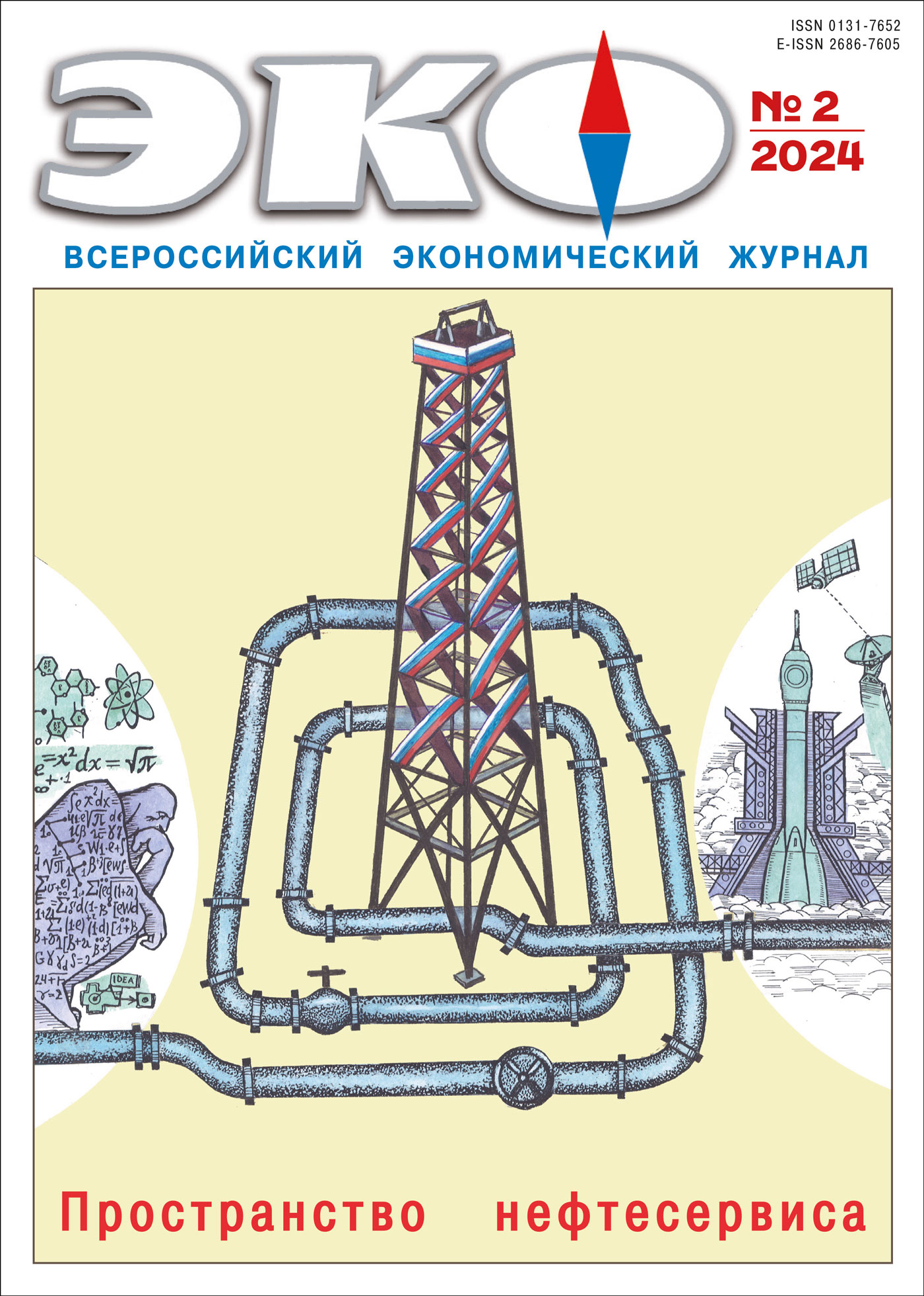ECONOMY SECTORS AND MARKETS
Published 2024-04-08
Keywords
- food prices; price volatility; price growth; hen egg; poultry farming; market conditions
How to Cite
1.
Shagaida Н, Ternovskiy Д. Price Crisis in the Egg Market: Facts and Consequences. ECO [Internet]. 2024 Apr. 8 [cited 2025 Dec. 3];54(2):131-45. Available from: https://ecotrends.ru/index.php/eco/article/view/4725
Abstract
The sharp rise in egg prices in 2023 in Russia caused a wide public outcry, which required explanations from experts and government officials. One of the arguments was the thesis about the increase in demand for eggs due to the growing prosperity of citizens. The paper analyzes the situation, which covers price dynamics, assessment of changes in consumption, sales, production of the product, the possibility of collusion between producers and sellers, demand for eggs from the food industry in the second half of 2023. The authors note the problems at the production stage, low profitability, saturation of the domestic market. In their opinion, the return of prices to the previous level is hardly possible, the price increase was predetermined and useful from the position of preserving the incentives of activity in egg poultry farming, preventing the shortage of eggs in stores. According to the results of the analysis proposals for the Government of the Russian Federation are made in order to increase the attractiveness of egg production business.References
- Бессонов В.А. Проблемы анализа российской макроэкономической динамики переходного периода. М.: ИЭПП, 2005.
- Бородин К.Г., Прокопьев М.Г., Строков А.С. Оценка перспектив развития отечественного рынка мяса птицы в условиях присоединения России к ВТО // Проблемы прогнозирования. 2013. № 2.
- Бородин К.Г. Влияние экспортных ограничений на внутренний рынок экспортера // Российский внешнеэкономический вестник. 2019. № 12. C. 31–39. DOI:10.24411/2072–8042–2019–00123
- Бородин К.Г. Методология прогнозирования рынков агропродовольственной продукции на основе однопродуктовых моделей частичного равновесия // Экономика, труд, управление в сельском хозяйстве. 2021. № 6 (75). C. 52–62.
- Голубев А.В. Методические подходы к регулированию цен на продовольствие // Научные труды Вольного экономического общества России. 2022. Т. 238. № 6. С. 268–293.
- Прокопьев М.Г. Моделирование влияния тарифно-таможенной политики на рынки отдельных видов сельскохозяйственной продукции // Экономическая наука современной России. 2015. № 1(68). C. 83–91.
- Прокопьев М.Г. Анализ влияния цен на импортные товары на цены внутреннего рынка: методические аспекты // Экономика и математические методы. 2016. Tом 52. № 1. C. 20–27.
- Andrew Muhammad, Charles Martinez, Abdelaziz Lawani. (2023). Why Are Eggs so Expensive? Understanding the Recent Spike in Egg Prices. Choices. Quarter 2.
- Jiacong, Lu. Study on Influencing Factors of Egg Price Fluctuation. AEMPS (2023) Vol. 27: 20–25. DOI: 10.54254/2754–1169/27/20231203
- Malone, T., K.A. Schaefer, and J.L. Lusk. (2021). Unscrambling US Egg Supply Chains amid COVID-19. Food Policy 101: 102046.

